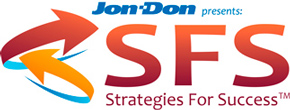 In my last post I brought up two key business concepts: “Alignment” and “Execution”. So how do these two terms relate to your cleaning or restoration business?
In my last post I brought up two key business concepts: “Alignment” and “Execution”. So how do these two terms relate to your cleaning or restoration business?
Let’s start with Alignment. Imagine standing on the center line in the middle of a long, straight stretch of highway. Standing way down the road, far away in the distance is your goal. It may be so far away you can hardly make out many of its details. But you know beyond any doubt that it’s there and you know beyond a shadow of a doubt that is where you want to be.
Now the place where you’re standing—on the center line right in the middle of this road—represents everything you believe in. Alignment simply means that as you start moving toward your goal you must “walk straight” and not veer off the road. Remember that everything (even what appears to be insignificant stuff) you do on the way will affect how close you stay to the center line on that road.
So as you move toward your goal(s) all the people you bring to your company (employees, customers, suppliers, associates) and all the activities your company engages in will affect your Alignment. The further off that center line any of these things take you (Especially when they cause you to run completely off the side of the road!) the further out of Alignment you and your company will be. (And of course the longer it will take you to reach your goal.) Conversely, the closer your actions remain to the center line, the more in Alignment you are, and the more quickly and efficiently you’ll arrive at your destination.
Now our second business concept, “Execution” means just that. It means “pulling the trigger” as in getting it done! Execution means actually acting on something or just plain doing the things you know you need to do to achieve your goals. It means making the easy decisions quickly so you can move on to bigger things. Execution means making the tough decisions that can cause sleepless nights and/or make your stomach turn.
Frequently Execution means taking risks with the decisions you make and getting past the mind games. For example, “What if this isn’t the right decision? What if I’m wrong and this decision costs us a lot of money or makes me look bad?”, etc, etc, etc!
Execution is not being impulsive in business. It does mean making the best decision you can with the best information you have available. It means not dragging your feet on decisions or “dancing in the batter’s box”. Execution simply is getting beyond constantly second-guessing yourself. Or avoiding what Steve Toburen calls, “Paralysis by analysis!”
Here’s two fairly straightforward examples of Alignment and Execution:
Alignment: Accepting the fact that merely calling your company “the best” is mostly wishful thinking. (The worst person to lie to is yourself!) So if your goal truly is to be “the best” then you’re likely going to have to change your Alignment if you are not there yet.
Execution: This may mean opening your wallet (even more difficult your mind!) and making the financial and emotional investment to get up to date with new business concepts. (And the technology that makes this stuff a reality.) It’s tough to admit we don’t know everything or that our way of doing things may no longer be the best way to do them. So Execution in this example means investing the money to gain the knowledge and learn the skills to actually be what you say you are—the best!
In our next A & E conversation I’ll offer a few more in-depth Alignment and Execution examples that address profitability and people.
Chuck Violand (more about Chuck)
SFS Instructor
CEO Violand Management Associates
